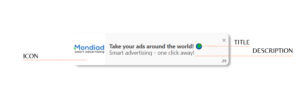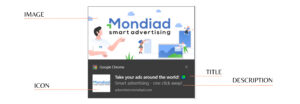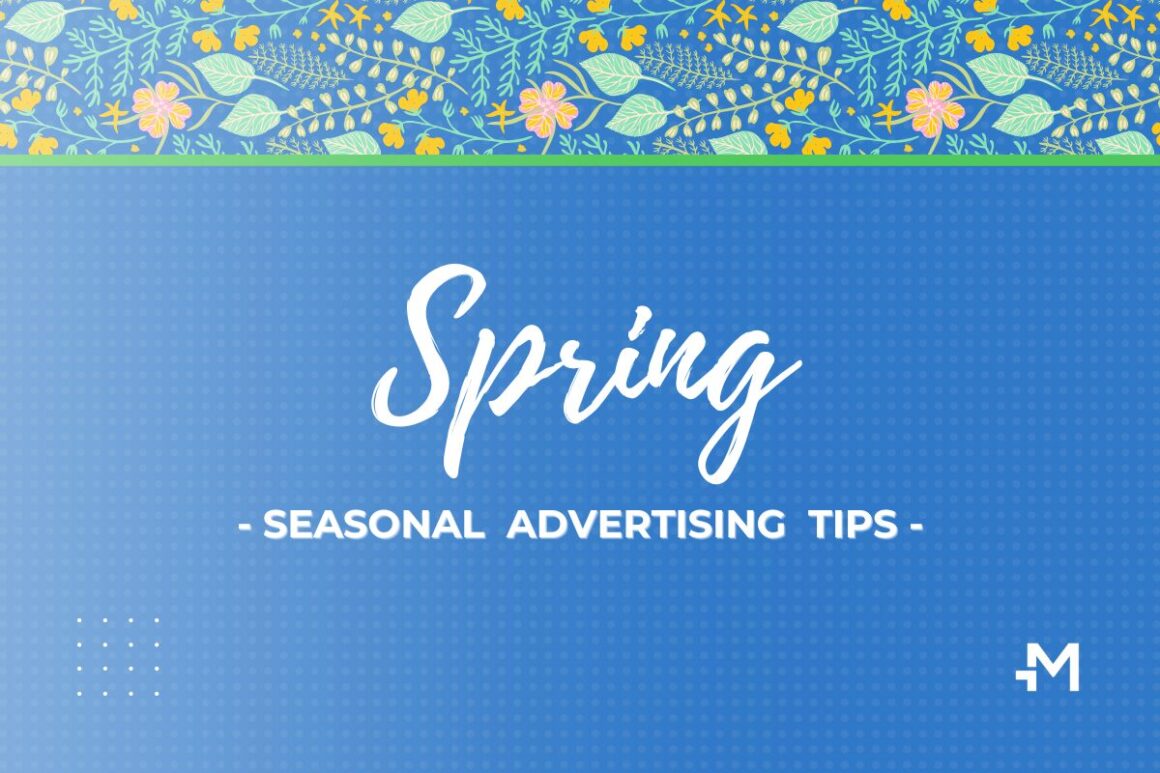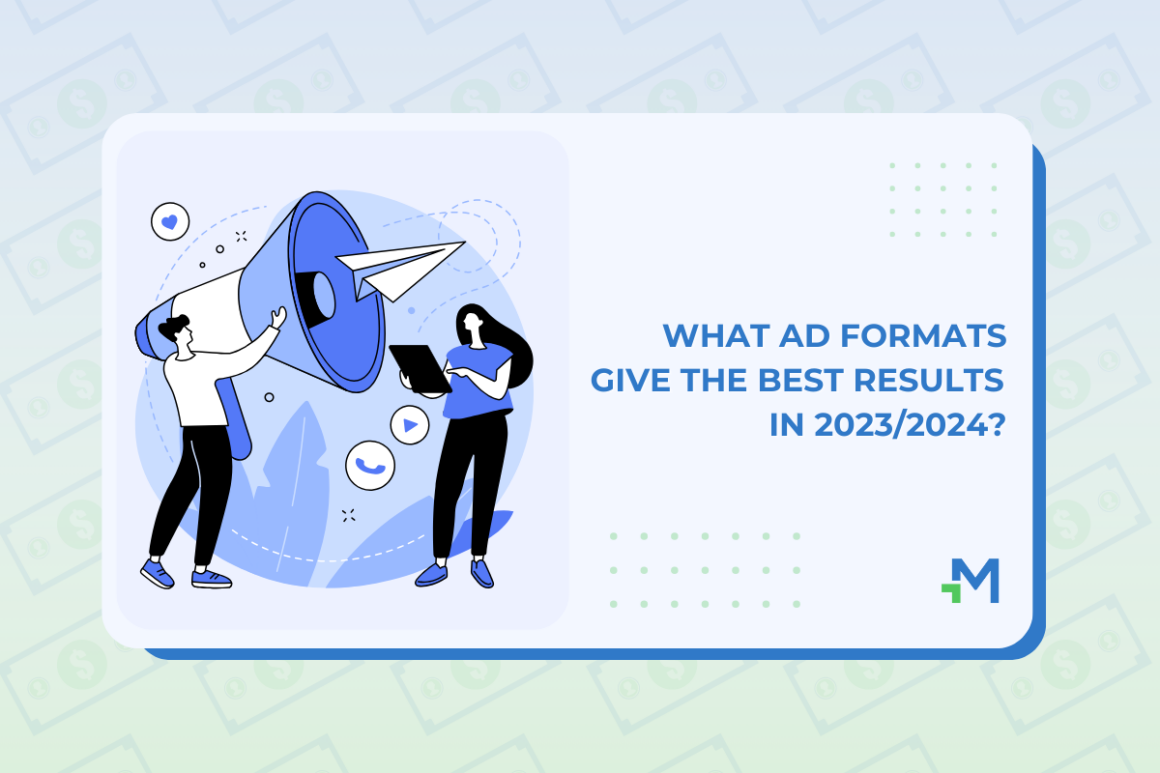How many ads do you see online, on a daily basis? According to Forbes, “Digital marketing experts estimate that most Americans are exposed to around 4,000 to 10,000 ads each day.” Even if you don’t fit the exact category, still, just take a moment to think about how many ads have you seen just today.
Now, why would they be so many? That’s simple… because they work. But ads come in all shapes and sizes, and that’s for a reason. To bring some light into this matter, today let’s tackle a bit one part of this ad pool, push advertising, or even better, the classic push vs. in-page push ads topic. If you are part of the advertisers/affiliate marketers community, here’s a piece on all you need to know to get started with push campaigns! After all, with that much competition, you’ll want to be on top, right?
Table of Contents
What’s the deal with push ads?
A push ad is basically an online advertisement in the form of a web push notification. As its name illustrates, an ad notification is “pushed” from point A(server/application) to point B(a user interface). The cool thing? They don’t occupy space on the publisher’s website.
It is known that push notifications were introduced for the first time in 2009, for IOS devices using APNs, by Apple Inc, the American multinational technology company. One year later, Google did the same thing, launching its own version and the rest is history.
Classic push and in-page push are two types of push notification ads that have different characteristics.
Classic Push
Classic Push or Classic Web Push like they’re also called are one of the most popular ad formats out there and the more traditional type of push notifications. They appear like a small browser notification delivered to a user’s web browser or app and can be clicked to redirect the user to the advertiser’s landing page.
The only trick is, that in order to receive them, the viewer must subscribe to notifications, namely, consent to receiving them. If the user accepts, the publisher can start sending the ads whenever they choose to, even when the user is not currently using the site.
On another note, the user doesn’t have to leave his private data. Everything is safely encrypted.
After the viewer clicks the ad, he is redirected to the landing page that was set up by the advertiser.
Main perks of classic push ads:
- Require the consent of the visiting user to get displayed, meaning he trusts the website he is visiting
- Require the consent of the visiting user to get displayed, meaning it is a real user, not fake traffic
- Are a great option if you wish to have access to your user at any moment
- Are used for all types of advertising campaigns
- Are user-friendly and very engaging for every user.
- Reaches users directly through mobile or desktop from everywhere
- Work very well for a variety of verticals
In-Page push
When it comes to the in-page push ad, this ad format is basically the evolved form of the classic push ad. They look like a combination between a popup and a messenger notification, shown in the corner of the screen.
The big deal with them is that in-page push ads do not need the user to have opted-in to receive them as they are delivered through the browser itself. This ad format is embedded in the website content and will automatically appear like a notification rather than a pop-up message, on the top/bottom of the publisher’s web page, to all the users that visit the website.
This ad format is embedded in the website content and will automatically appear like a notification rather than a pop-up message, on the top/bottom of the publisher’s web page, to all the users that visit the website.
Main perks of in-page push ads:
- Does not require the user’s consent/a subscription to be shown
- Displayed in a push form after the page is loaded, directly on the website
- Compatible with all devices
- Relevant for all users
- Do not interrupt the user experience
- Are compatible to iOS and macOS devices(compared to classic push ads)
- Offer high visibility and engagement
- Are designed to catch the user’s attention
- Work very well for a variety of verticals
Classic push vs. in-page push ads differences:
As already mentioned, the main difference between classic push and in-page push ads is the way they are shown to website visitors.
As in-page push ads do not interrupt the user’s experience they are considered less intrusive than classic notifications. On the other hand, classic push ads are known to perform better since they are delivered directly to the user’s device, even if the user is not currently browsing the web.
Both ad types provide great value to both end users and businesses. The issue of choosing which one is “better” stands in the advertiser’s goal, offer, and target audience.
What are the best pricing models for push ads:
Push ads are often cost-effective compared to other forms of advertising, such as traditional display ads or TV commercials.
Ultimately, the best pricing type for push ads will depend on your specific advertising goals, budget, and the performance of your campaigns but the most popular cost models for push ads and the following:
CPC (Cost per Click):
Perhaps the most straightforward model. With this model, you basically pay each time a user clicks on your push ad. This is best to drive traffic to your website.
CPM (Cost per Thousand Impressions):
By choosing this model, you’ll pay for every thousand impressions of your delivered push ad. This is the top option if your goal is to increase brand awareness.
CPA (Cost per Acquisition):
On a CPA basis, you’ll pay whenever a user takes a specific action that you have set up, be it making a purchase or signing up for a newsletter. This option is mostly chosen for driving conversions, as you only pay when users take a desired action.
What verticals work great with push ads?
Another great deal about push advertising is that it can be effective on a variety of verticals:
- eCommerce: sales, discounts, product launches
- Travel and tourism: travel deals and discounts
- Finance: credit cards, loans, investment services
- Media: news, new content, subscriptions to media outlets.
- Nutra/Health: health and wellness products, services, apps, healthy lifestyle articles
- Dating: dating apps, websites, adult websites
… you name it.
Push ads are great for informing users of news, promoting special offers, and overall engaging users without disrupting their web experience. Results stand in the hand of your campaign setup as well as the behaviour of your target audience.
Push campaigns recommendations:
Target the right audience:
Make sure you are targeting the right audience for your product or service. In Mondiad you can target users according to country, carrier, device type, browser, browser language, operating system, subscription age, traffic type, zoneids, subids.
Do A/B testing:
Test different variations of your ads to see what works better. Use A/B testing to compare creatives, GEOs, display settings, day parting, etc. From here compare results and optimize accordingly.
Use compelling visuals in your creatives:
Here are some recommendations we already crafted when it comes to creatives.
Use the right tokens:
You can use the [country], [region], [city], [platform], [os], [browser] Mondiad tokens in the title and description of your ad creatives and targeted each user will see their own values when viewing your ads.
Now you know the differences between classic push vs. in-page push ads and you are one step closer to choosing the right format for your campaign!
-> Run push campaigns in less than 10 minutes & Monetize your website with push ads from Mondiad!











